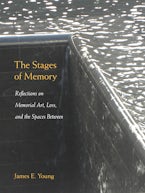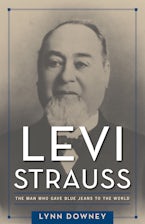- Home
- Public History in Historical Perspective
- The Stages of Memory

The Stages of Memory
Reflections on Memorial Art, Loss, and the Spaces Between
Published by: University of Massachusetts Press
Series: Public History in Historical Perspective
256 Pages, 7.00 x 9.25 x 0.70 in, 115 color illus.
Other Retailers:
Winner of the 2017 National Council on Public History Book Award
From around the world, whether for New York City's 9/11 Memorial, at exhibits devoted to the arts of Holocaust memory, or throughout Norway's memorial process for the murders at Utøya, James E. Young has been called on to help guide the grief stricken and survivors in how to mark their losses. This poignant, beautifully written collection of essays offers personal and professional considerations of what Young calls the "stages of memory," acts of commemoration that include spontaneous memorials of flowers and candles as well as permanent structures integrated into sites of tragedy. As he traces an arc of memorial forms that spans continents and decades, Young returns to the questions that preoccupy survivors, architects, artists, and writers: How to articulate a void without filling it in? How to formalize irreparable loss without seeming to repair it?
Richly illustrated, the volume is essential reading for those engaged in the processes of public memory and commemoration and for readers concerned about how we remember terrible losses.
From around the world, whether for New York City's 9/11 Memorial, at exhibits devoted to the arts of Holocaust memory, or throughout Norway's memorial process for the murders at Utøya, James E. Young has been called on to help guide the grief stricken and survivors in how to mark their losses. This poignant, beautifully written collection of essays offers personal and professional considerations of what Young calls the "stages of memory," acts of commemoration that include spontaneous memorials of flowers and candles as well as permanent structures integrated into sites of tragedy. As he traces an arc of memorial forms that spans continents and decades, Young returns to the questions that preoccupy survivors, architects, artists, and writers: How to articulate a void without filling it in? How to formalize irreparable loss without seeming to repair it?
Richly illustrated, the volume is essential reading for those engaged in the processes of public memory and commemoration and for readers concerned about how we remember terrible losses.
James E. Young is Distinguished University Professor of English and Judaic Studies at the University of Massachusetts Amherst. He served on the design selection committee for the Berlin Denkmal and was a member of the jury of New York City's September 11 Memorial design competition.
"This is a marvelous collection of superb historical and aesthetic analyses of actual monuments and memorials, and of the vexing, almost always deeply controversial process by which cities, museums, peoples, and nations determine how to remember."—David Blight, author of Race and Reunion: The Civil War in American Memory
"There is, quite simply, no one else who could produce this set of compelling essays."—Edward Linenthal, author of The Unfinished Bombing: Oklahoma City in American Memory
"Young's collection of essays provides an informative and generous portrait of the process of memorialization at a time when—alas—brute force in history has dramatically imposed that form of expression on social conscience."—Berel Lang, Holocaust and Genocide Studies
"The book asks important questions and reflects thoughtfully on how memory moves in stages . . . Perhaps no other thinker crosses over so seamlessly between description of the memorial-choosing process, and theoretical reflection on the work of memory. This book enables literary scholars to visualize behind, as it were, the stages before the monuments take form and catalyze healthy debate and disagreement."—American Literary History
"[T]his book offers vital observations from someone who has labored long and hard in the emotionally fraught field of memorial studies . . . For all his work, as well as his insights here into the process of the evolution of memory as codified in memorials, as well as the selection process itself, James Young deserves not only our accolades but also our sincerest thanks."—Memory Studies Journal
"Those interested in history, current political issues, architecture, or even tourists will find this book thought-provoking. Young's study is also beneficial for those wishing to learn more about the Holocaust and its aftermath, as he dedicates five out of seven chapters to the memorial art informed by and created to remember and articulate the massive loss of livescaused by the genocide."—History News
"Throughout his career, Young has thought deeply about contemporary monuments, and in the Stages of Memory, he presents what amounts to a philosophy of their creation. The author's emphasis on process is both sensible and compassionate, and his inclusive, democratic approach to monument making may be essential in our times."—CAA.Reviews
Winner of the 2017 National Council on Public History Book Award











